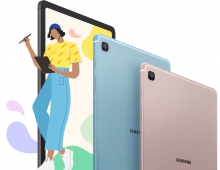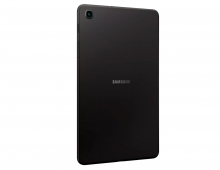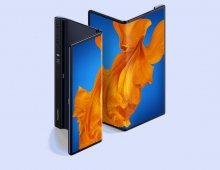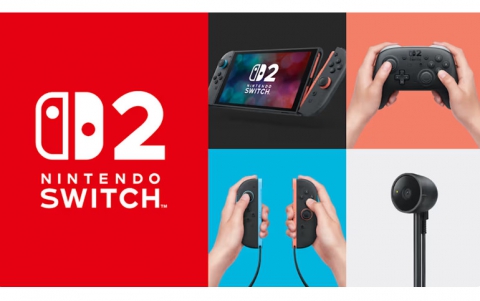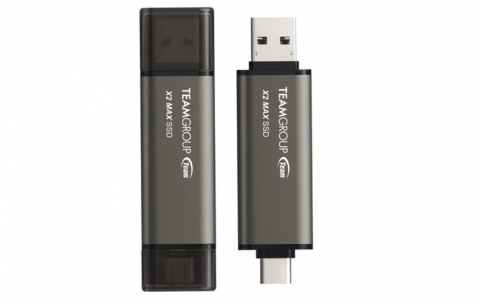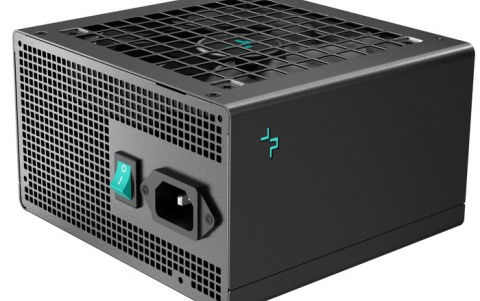
RIM Unveils The BlackBerry PlayBook Tablet, Social and Enterprise Apps
Onstage at the BlackBerry developer conference, DEVCON 2010, in
San Francisco today, Research In Motion today unveilled its
new professional-grade BlackBerry PlayBook tablet and
BlackBerry Tablet OS.
The BlackBerry PlayBook is designed to give users web browsing,
multitasking and high performance multimedia, while also
providing advanced security features, out-of-the-box enterprise
support and a development platform for IT departments and
developers.
The powerful tablet is ultra portable. Measuring less than half an inch thick and weighing less than a pound, the BlackBerry PlayBook features a 7" high resolution display. At its heart, the BlackBerry PlayBook ispowered by a 1 GHz dual-core processor and the new BlackBerry Tablet OS which supports symmetric multiprocessing.
The tablet support Adobe Flash Player 10.1, Adobe Mobile AIR and HTML-5, it includes dual HD cameras for video capture and video conferencing that can both record HD video at the same time, and an HDMI-out port for presenting one's creations on external displays. The BlackBerry PlayBook also offers rich stereo sound and a media player.
For those BlackBerry PlayBook users who carry a BlackBerry smartphone, it will also be possible to pair their tablet and smartphone using a secure Bluetooth connection. This means they can opt to use the larger tablet display to view any of the email, BBM, calendar, tasks, documents and other content that resides on (or is accessible through) their smartphone. They can also use their tablet and smartphone interchangeably without worrying about syncing or duplicating data. This secure integration of BlackBerry tablets and smartphones is a particularly useful feature for those business users who want to leave their laptop behind.
The BlackBerry PlayBook is enterprise ready and compatible (out-of-the-box) with BlackBerry Enterprise Server. When connected over Bluetooth, the smartphone content is viewable on the tablet, but the content actually remains stored on the BlackBerry smartphone and is only temporarily cached on the tablet (and subject to IT policy controls).
The BlackBerry Tablet OS is built upon the QNX Neutrino microkernel architecture. Neutrino has been field hardened for years and is being used to support mission-critical applications in everything from planes, trains and automobiles to medical equipment and the largest core routers that run the Internet.
The Neutrino based microkernel architecture in the BlackBerry Tablet OS delivers performance, high scalability, Common Criteria EAL 4+ security, and support for industry standard tools that are already familiar to developers. The OS is fully POSIX compliant enabling easy portability of C-based code, supports Open GL for 2D and 3D graphics intensive applications like gaming, and will run applications built in Adobe Mobile AIR as well as the new BlackBerry WebWorks app platform announced today (which will allow apps to be written to run on BlackBerry PlayBook tablets as well as BlackBerry smartphones with BlackBerry 6). The BlackBerry Tablet OS will also support Java enabling developers to easily bring their existing BlackBerry 6 Java applications to the BlackBerry Tablet OS environment.
Key features and specifications of the BlackBerry PlayBook include:
- 7" LCD, 1024 x 600, WSVGA, touch screen with full multi-touch and gesture support
- BlackBerry Tablet OS with support for symmetric multiprocessing
- 1 GHz dual-core processor
- 1 GB RAM
- Dual HD cameras (3 MP front facing, 5 MP rear facing), supports 1080p HD video recording
- Video playback: 1080p HD Video, H.264, MPEG, DivX, WMV
- Audio playback: MP3, AAC, WMA
- HDMI video output
- Wi-Fi - 802.11 a/b/g/n
- Bluetooth 2.1 + EDR
- Connectors: microHDMI, microUSB, charging contacts
- Open, flexible application platform with support for WebKit/HTML-5, Adobe Flash Player 10.1, Adobe Mobile AIR, Adobe Reader, POSIX, OpenGL, Java
- Ultra thin and portable:
o Measures 5.1"x 7.6"x0.4" (130mm x 193mm x 10mm)
o Weighs less than a pound (approximately 0.9 lb or 400g)
- Additional features and specifications of the BlackBerry PlayBook will be shared on or before the date this product is launched in retail outlets.
- RIM intends to also offer 3G and 4G models in the future.
The BlackBerry PlayBook is expected to be available in retail outlets and other channels in the United States in early 2011 with rollouts in other international markets beginning in (calendar) Q2.
RIM will begin working with developers and select corporate customers next month to begin development and early testing efforts.
The BlackBerry Tablet OS SDK is planned for release in the coming weeks and developers can register for early access at www.blackberry.com/developers/tabletos.
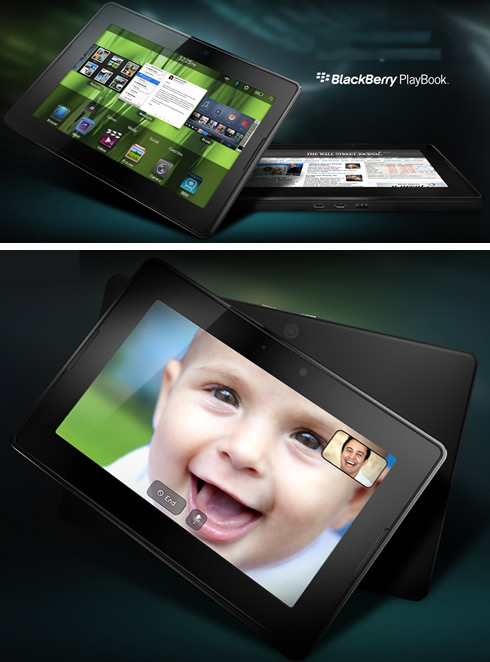
WebWorks app platform
RIM also today announced its next-generation web-based development platform, BlackBerry WebWorks, which enables web developers to build full-featured applications for BlackBerry smartphones entirely in HTML-5, CSS and JavaScript.
BlackBerry WebWorks also includes updates to the web application packager, new web APIs and the BlackBerry Web Plug-Ins 2.5.
Web application packager 1.5
The web application packager is used by developers to package their web applications in the same way a BlackBerry Java application is packaged, and with the same file formats. BlackBerry web applications can then be distributed via BlackBerry App World, BlackBerry Desktop Manager, OTA (over-the-air) or BlackBerry Enterprise Server.
BlackBerry Web APIs
BlackBerry WebWorks includes a set of new web extensions that enable a deeper integration with native applications and other functions of the handset.
- Send a text message from within the application
- Read call log data from the phone application, check if the phone is currently in an active call, check the number of missed calls
- Play an audio file as well as create APIs for playing, pausing, stopping and seeking of the audio file from within the application?s UI
Web Plug-Ins 2.5
Updates to the Web Plug-Ins for BlackBerry WebWorks include multiple entry points, which give developers the ability to start their application in the background, in addition to launching from the homescreen or a download folder. Applications can also continue to run in the background. Web Plug-Ins 2.5 also gives developers the ability to cache web pages and content to the handset's system memory for faster performance.
RIM is working with the open source developer community to allow developers to access and contribute to the BlackBerry open web application platform and tooling components. In addition to sharing source code for the BlackBerry web platform, RIM is working with open source JavaScript framework companies DoJo, GitHub, JQuery, Nitobi and Sencha to encourage developers to create web applications with advanced web and AJAX functionality.
The BlackBerry open web platform is available within partner open source communities now: http://www.github.com/blackberry
BBM Social Platform
RIM also today announced the BBM (BlackBerry Messenger) Social Platform, giving developers the tools to build applications that take advantage of the social aspects of the popular BBM service.
Developers will be able to integrate various functions of the BBM service into their applications including chat capabilities, content sharing, and invitations. For example, users will be able to invite their BBM friends to join them in a game and then chat with one another while the game is being played.
Other BBM functionality accessible to developers through the BBM Social Platform includes:
- Contact list ? allows users to choose from their BBM contacts from within another application in order to initiate social interactions such as chatting or initiating game play
- BBM user profile ? an application can insert application status updates into the user's BBM profile allowing it to be launched or downloaded from BBM by the user?s friends
- Application-specific communities ? users can create BBM friend groups specific to an application
- Data Transfer ? allows users to transfer pictures, audio, video and other content directly from an application to their BBM contacts or groups
- Invitations ? allows users to invite new friends to BBM, invite their friends to interact within or download an application, and accept invitations, all from within an application
The BBM Social Platform is expected to be available in the spring of 2011.
"Super Apps" for business
Onstage at the BlackBerry developer conference Research In Motion also previewed BlackBerry Enterprise Application Middleware ? an application development platform that will enable commercial enterprise and corporate developers to more easily build "super app" enterprise applications and services for BlackBerry smartphones. IBM Interactive and ING DIRECT, Oracle, and SAP joined RIM on-stage at the conference today to present their plans to enable "super app" development solutions and services using the new platform.
BlackBerry Enterprise Application Middleware will include a set of application programming interfaces (APIs), libraries and server software that will make it easier for developers to build "super apps" that can access instant data push and alerts, use efficient file transfers with enterprise applications, and make it easy to query a user?s device for geo-location, presence, current camera image, calendar availability, device type, and much more. It will be possible to use it with popular application development platforms such as IBM WebSphere, Oracle Fusion Middleware and the mobility platform from SAP and Sybase, and can be integrated with these platforms to give access to developers.
These capabilities are combined with the advantages of the BlackBerry Enterprise Solution offering real-time communication via push technology, cost-effective data usage, efficiency over carrier networks, easy web-based administration of smartphones, servers, users, groups and applications, single sign-on, and secure wireless access to enterprise systems.
"BlackBerry Enterprise Application Middleware will make it easier to build essential enterprise functions in BlackBerry smartphone applications that are currently not available or easily built on any other mobile platform," said Alan Brenner, Senior Vice President at Research In Motion. "It also presents new opportunities for innovation in enterprise application development by our strategic alliance partners, enterprise customers, systems integrators and independent software vendor community."
IBM Interactive, Oracle and SAP are currently using BlackBerry Enterprise Application Middleware in early trials.
IBM Interactive, which specializes in providing clients with a think-tank environment to collaboratively work with user experience, industry and technology experts to plan, develop and launch mobile, next-generation business solutions, is utilizing the features of BlackBerry Enterprise Application Middleware together with IBM WebSphere to help develop a business-to-consumer application with ING DIRECT.
Oracle is integrating BlackBerry Enterprise Application Middleware into Oracle Application Development Framework (ADF) to enable Oracle developers to build enterprise applications that can communicate with their BlackBerry workforce using development tools that they are already familiar with.
SAP works with RIM to offer new opportunities to extend the reach of SAP Business Suite on BlackBerry smartphones. Through close integration of BlackBerry Enterprise Application Middleware with the mobility platform from SAP and Sybase, partners and customers will be able to quickly build mobile applications that connect business data to their workers on BlackBerry smartphones.
RIM will be previewing the first BlackBerry Enterprise Application Middleware libraries -- Alert/Notifications Push, Files Transfer, and Device Information to Server App - at BlackBerry DEVCON this week.
Alerts/Notifications Push Library ? Enables developers to build secure instant delivery of data between back-end enterprise systems and BlackBerry smartphones in under a hundred lines of code. Data can be pushed to an application on the device or directly to the BlackBerry inbox, calendar or tasks via personal identification number (PIN), email or phone number. This library is ideal for simplifying the delivery of enterprise work flow to BlackBerry smartphones for immediate response by mobile workers rather than waiting for them to get back to their desk to respond. Use cases include a travel request sent to a manager?s BlackBerry smartphone for approval; a patient status update sent to a doctor or nurse; product price change requests sent in by a salesperson; an alert to an executive about a decrease in revenues/margins as the information becomes available; or a system alert sent to an IT manager.
File Transfer Library ? Enables developers to build applications with efficient large file transfers between back-end systems and BlackBerry smartphones, and all in under a hundred lines of code. Data can be programmed to be viewed only, downloaded, uploaded or saved to device memory or a media card on a BlackBerry smartphone. The complexities of efficient wireless data transmission are automated and kept transparent to developers so that they can focus on application logic.
Device Information to Server App Library ? Enables querying of a device by back-end enterprise systems that can be built into a mobile application in under a hundred lines of code. Examples of data that can be queried include geo-location, presence, current camera image, calendar availability, device type, and much more.
The initial set of BlackBerry Enterprise Application Middleware libraries are expected to be available in closed beta later this year. Additional libraries are expected to be released in 2011.
For more information, visit www.blackberry.com/developers/beam.
The powerful tablet is ultra portable. Measuring less than half an inch thick and weighing less than a pound, the BlackBerry PlayBook features a 7" high resolution display. At its heart, the BlackBerry PlayBook ispowered by a 1 GHz dual-core processor and the new BlackBerry Tablet OS which supports symmetric multiprocessing.
The tablet support Adobe Flash Player 10.1, Adobe Mobile AIR and HTML-5, it includes dual HD cameras for video capture and video conferencing that can both record HD video at the same time, and an HDMI-out port for presenting one's creations on external displays. The BlackBerry PlayBook also offers rich stereo sound and a media player.
For those BlackBerry PlayBook users who carry a BlackBerry smartphone, it will also be possible to pair their tablet and smartphone using a secure Bluetooth connection. This means they can opt to use the larger tablet display to view any of the email, BBM, calendar, tasks, documents and other content that resides on (or is accessible through) their smartphone. They can also use their tablet and smartphone interchangeably without worrying about syncing or duplicating data. This secure integration of BlackBerry tablets and smartphones is a particularly useful feature for those business users who want to leave their laptop behind.
The BlackBerry PlayBook is enterprise ready and compatible (out-of-the-box) with BlackBerry Enterprise Server. When connected over Bluetooth, the smartphone content is viewable on the tablet, but the content actually remains stored on the BlackBerry smartphone and is only temporarily cached on the tablet (and subject to IT policy controls).
The BlackBerry Tablet OS is built upon the QNX Neutrino microkernel architecture. Neutrino has been field hardened for years and is being used to support mission-critical applications in everything from planes, trains and automobiles to medical equipment and the largest core routers that run the Internet.
The Neutrino based microkernel architecture in the BlackBerry Tablet OS delivers performance, high scalability, Common Criteria EAL 4+ security, and support for industry standard tools that are already familiar to developers. The OS is fully POSIX compliant enabling easy portability of C-based code, supports Open GL for 2D and 3D graphics intensive applications like gaming, and will run applications built in Adobe Mobile AIR as well as the new BlackBerry WebWorks app platform announced today (which will allow apps to be written to run on BlackBerry PlayBook tablets as well as BlackBerry smartphones with BlackBerry 6). The BlackBerry Tablet OS will also support Java enabling developers to easily bring their existing BlackBerry 6 Java applications to the BlackBerry Tablet OS environment.
Key features and specifications of the BlackBerry PlayBook include:
- 7" LCD, 1024 x 600, WSVGA, touch screen with full multi-touch and gesture support
- BlackBerry Tablet OS with support for symmetric multiprocessing
- 1 GHz dual-core processor
- 1 GB RAM
- Dual HD cameras (3 MP front facing, 5 MP rear facing), supports 1080p HD video recording
- Video playback: 1080p HD Video, H.264, MPEG, DivX, WMV
- Audio playback: MP3, AAC, WMA
- HDMI video output
- Wi-Fi - 802.11 a/b/g/n
- Bluetooth 2.1 + EDR
- Connectors: microHDMI, microUSB, charging contacts
- Open, flexible application platform with support for WebKit/HTML-5, Adobe Flash Player 10.1, Adobe Mobile AIR, Adobe Reader, POSIX, OpenGL, Java
- Ultra thin and portable:
o Measures 5.1"x 7.6"x0.4" (130mm x 193mm x 10mm)
o Weighs less than a pound (approximately 0.9 lb or 400g)
- Additional features and specifications of the BlackBerry PlayBook will be shared on or before the date this product is launched in retail outlets.
- RIM intends to also offer 3G and 4G models in the future.
The BlackBerry PlayBook is expected to be available in retail outlets and other channels in the United States in early 2011 with rollouts in other international markets beginning in (calendar) Q2.
RIM will begin working with developers and select corporate customers next month to begin development and early testing efforts.
The BlackBerry Tablet OS SDK is planned for release in the coming weeks and developers can register for early access at www.blackberry.com/developers/tabletos.

WebWorks app platform
RIM also today announced its next-generation web-based development platform, BlackBerry WebWorks, which enables web developers to build full-featured applications for BlackBerry smartphones entirely in HTML-5, CSS and JavaScript.
BlackBerry WebWorks also includes updates to the web application packager, new web APIs and the BlackBerry Web Plug-Ins 2.5.
Web application packager 1.5
The web application packager is used by developers to package their web applications in the same way a BlackBerry Java application is packaged, and with the same file formats. BlackBerry web applications can then be distributed via BlackBerry App World, BlackBerry Desktop Manager, OTA (over-the-air) or BlackBerry Enterprise Server.
BlackBerry Web APIs
BlackBerry WebWorks includes a set of new web extensions that enable a deeper integration with native applications and other functions of the handset.
- Send a text message from within the application
- Read call log data from the phone application, check if the phone is currently in an active call, check the number of missed calls
- Play an audio file as well as create APIs for playing, pausing, stopping and seeking of the audio file from within the application?s UI
Web Plug-Ins 2.5
Updates to the Web Plug-Ins for BlackBerry WebWorks include multiple entry points, which give developers the ability to start their application in the background, in addition to launching from the homescreen or a download folder. Applications can also continue to run in the background. Web Plug-Ins 2.5 also gives developers the ability to cache web pages and content to the handset's system memory for faster performance.
RIM is working with the open source developer community to allow developers to access and contribute to the BlackBerry open web application platform and tooling components. In addition to sharing source code for the BlackBerry web platform, RIM is working with open source JavaScript framework companies DoJo, GitHub, JQuery, Nitobi and Sencha to encourage developers to create web applications with advanced web and AJAX functionality.
The BlackBerry open web platform is available within partner open source communities now: http://www.github.com/blackberry
BBM Social Platform
RIM also today announced the BBM (BlackBerry Messenger) Social Platform, giving developers the tools to build applications that take advantage of the social aspects of the popular BBM service.
Developers will be able to integrate various functions of the BBM service into their applications including chat capabilities, content sharing, and invitations. For example, users will be able to invite their BBM friends to join them in a game and then chat with one another while the game is being played.
Other BBM functionality accessible to developers through the BBM Social Platform includes:
- Contact list ? allows users to choose from their BBM contacts from within another application in order to initiate social interactions such as chatting or initiating game play
- BBM user profile ? an application can insert application status updates into the user's BBM profile allowing it to be launched or downloaded from BBM by the user?s friends
- Application-specific communities ? users can create BBM friend groups specific to an application
- Data Transfer ? allows users to transfer pictures, audio, video and other content directly from an application to their BBM contacts or groups
- Invitations ? allows users to invite new friends to BBM, invite their friends to interact within or download an application, and accept invitations, all from within an application
The BBM Social Platform is expected to be available in the spring of 2011.
"Super Apps" for business
Onstage at the BlackBerry developer conference Research In Motion also previewed BlackBerry Enterprise Application Middleware ? an application development platform that will enable commercial enterprise and corporate developers to more easily build "super app" enterprise applications and services for BlackBerry smartphones. IBM Interactive and ING DIRECT, Oracle, and SAP joined RIM on-stage at the conference today to present their plans to enable "super app" development solutions and services using the new platform.
BlackBerry Enterprise Application Middleware will include a set of application programming interfaces (APIs), libraries and server software that will make it easier for developers to build "super apps" that can access instant data push and alerts, use efficient file transfers with enterprise applications, and make it easy to query a user?s device for geo-location, presence, current camera image, calendar availability, device type, and much more. It will be possible to use it with popular application development platforms such as IBM WebSphere, Oracle Fusion Middleware and the mobility platform from SAP and Sybase, and can be integrated with these platforms to give access to developers.
These capabilities are combined with the advantages of the BlackBerry Enterprise Solution offering real-time communication via push technology, cost-effective data usage, efficiency over carrier networks, easy web-based administration of smartphones, servers, users, groups and applications, single sign-on, and secure wireless access to enterprise systems.
"BlackBerry Enterprise Application Middleware will make it easier to build essential enterprise functions in BlackBerry smartphone applications that are currently not available or easily built on any other mobile platform," said Alan Brenner, Senior Vice President at Research In Motion. "It also presents new opportunities for innovation in enterprise application development by our strategic alliance partners, enterprise customers, systems integrators and independent software vendor community."
IBM Interactive, Oracle and SAP are currently using BlackBerry Enterprise Application Middleware in early trials.
IBM Interactive, which specializes in providing clients with a think-tank environment to collaboratively work with user experience, industry and technology experts to plan, develop and launch mobile, next-generation business solutions, is utilizing the features of BlackBerry Enterprise Application Middleware together with IBM WebSphere to help develop a business-to-consumer application with ING DIRECT.
Oracle is integrating BlackBerry Enterprise Application Middleware into Oracle Application Development Framework (ADF) to enable Oracle developers to build enterprise applications that can communicate with their BlackBerry workforce using development tools that they are already familiar with.
SAP works with RIM to offer new opportunities to extend the reach of SAP Business Suite on BlackBerry smartphones. Through close integration of BlackBerry Enterprise Application Middleware with the mobility platform from SAP and Sybase, partners and customers will be able to quickly build mobile applications that connect business data to their workers on BlackBerry smartphones.
RIM will be previewing the first BlackBerry Enterprise Application Middleware libraries -- Alert/Notifications Push, Files Transfer, and Device Information to Server App - at BlackBerry DEVCON this week.
Alerts/Notifications Push Library ? Enables developers to build secure instant delivery of data between back-end enterprise systems and BlackBerry smartphones in under a hundred lines of code. Data can be pushed to an application on the device or directly to the BlackBerry inbox, calendar or tasks via personal identification number (PIN), email or phone number. This library is ideal for simplifying the delivery of enterprise work flow to BlackBerry smartphones for immediate response by mobile workers rather than waiting for them to get back to their desk to respond. Use cases include a travel request sent to a manager?s BlackBerry smartphone for approval; a patient status update sent to a doctor or nurse; product price change requests sent in by a salesperson; an alert to an executive about a decrease in revenues/margins as the information becomes available; or a system alert sent to an IT manager.
File Transfer Library ? Enables developers to build applications with efficient large file transfers between back-end systems and BlackBerry smartphones, and all in under a hundred lines of code. Data can be programmed to be viewed only, downloaded, uploaded or saved to device memory or a media card on a BlackBerry smartphone. The complexities of efficient wireless data transmission are automated and kept transparent to developers so that they can focus on application logic.
Device Information to Server App Library ? Enables querying of a device by back-end enterprise systems that can be built into a mobile application in under a hundred lines of code. Examples of data that can be queried include geo-location, presence, current camera image, calendar availability, device type, and much more.
The initial set of BlackBerry Enterprise Application Middleware libraries are expected to be available in closed beta later this year. Additional libraries are expected to be released in 2011.
For more information, visit www.blackberry.com/developers/beam.




